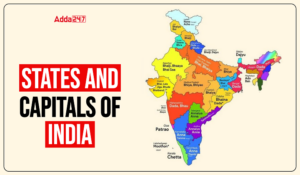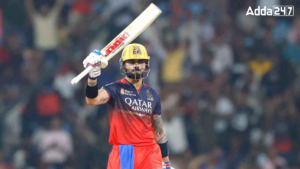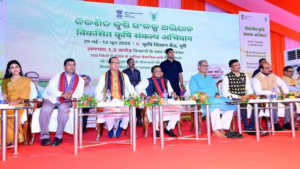Gujarat: About
Gujarat is located along the western coast of India. It has the longest coastline in the country About 1,600 km. By area, Gujarat is the fifth largest state in India. Gujarat shares its borders with Rajasthan, Maharashtra, and Madhya Pradesh and it shares its international borders with Dadra and Nagar Haveli and Daman and Diu, and Pakistan. It shares its coastline with the Arabian sea. It has the fourth largest economy in the country and has the 10th highest GSDP per capita in the country. In the Human Development Index Gujarat is the 21st state. Gujarat is one of the four states to prohibit the sale of alcohol along with Bihar, Mizoram, and Nagaland.
States and Capitals of India
Gujarat: Things you need to know
- The Capital of Gujarat is Gandhinagar.
- The largest city of Gujarat is Ahmedabad.
- The Chief Minister of Gujarat is Bhupendra Patel and the Governor is Acharya Dev Vrat.
- The official language of Gujarat is Gujarati.
- It is the ninth most populous state in India with a population of 60,439,692.
- During the Indus valley civilization, Gujarat was one of the main central areas, which is primarily centered in Pakistan.
- Gujarat contains the ancient cities of the Indus Valley such as Lothal, Dholavira, and Gila Dhoro.
- In Gujarat almost fifty Indus Valley settlement ruins have been discovered.
- Gujarat’s ancient history suggests that the state was related or trade and commercial activities. The evidence shows the economic connection of Gujarat with Egypt, Bahrain, and Sumer in Persian from 1000 to 750 BCE.
- Chandragupta Maurya conquered several earlier states in Gujarat. Pushyagupta, a Vaishya, was appointed as the governor of Saurashtra by the Mauryan Regime.
- There was an Indo-Greek defeat in Gujarat of Demetrius between the decline of Mauryan power and Saurashtra.
- The Saka rulers played a prominent role in Gujarat’s History, for nearly 300 years from the start of the 1st Century CE.
- The Kshatrapa dynasty was replaced by the Gupta Empire with the conquest of Gujarat by the Chandragupta Vikramaditya.
- The successor of Vikramaditya Skandagupta left an inscription on a rock at Junagadh which gives the details of the governor’s repairs to the embankment surrounding Sudarshan Lake.
- The Ancient Greeks and other western centers of civilization are familiar to Gujarat.
- “The Periplus of the Erthraean Sea: Travel and Trade in the Indian Ocean by a Merchant of the First Century” is a Greek book that documents Gujarat’s 2000 years of Maritime history.
- After the decline of the Mauryan Empire, the rule of Gujarat was under the Shaka leader, Mahakshatrapa Rudradaman.
- Gujarat formed a part of the Gupta Empire from the late 4th to the late 5th century, until the Guptas were succeeded by the Maitraka dynasty of the Kingdom of Valabhi, which ruled over Gujarat and Malwa for three centuries.
- During the 8th and 9th Centuries, the Maitraka dynasty was succeeded by the Gujarat Pratiharas.
- However, the Solanki dynasty soon took over the rule. The boundaries of Gujarat reached their farthest limits during the reign of the Solankis.
- In 1299, the Solankis were defeated by Ala al-Din Khalji, Sultan of Delhi and Gujarat came under Muslim rule.
- The first independent sultan of Gujarat Ahmad Shah, founded Ahmadabad in 1411.
- In 1818, Gujarat came under the administration of the British East Indian Company.
- Gujarat was made into a province after the Indian Mutiny of 1857-58, with an area of about 10,000 square miles.
- During the Independence of India, Gujarat was included in Bombay state.
- On 1 May 1960, Bombay was split into present-day Gujarat and Maharashtra.
Buy Prime Test Series for all Banking, SSC, Insurance & other exams



 States and Capitals - How Many States in...
States and Capitals - How Many States in...
 Kohli Creates History, Achieves 9000 T20...
Kohli Creates History, Achieves 9000 T20...
 ‘Viksit Krishi Sankalp Abhiyan’ Launched...
‘Viksit Krishi Sankalp Abhiyan’ Launched...

